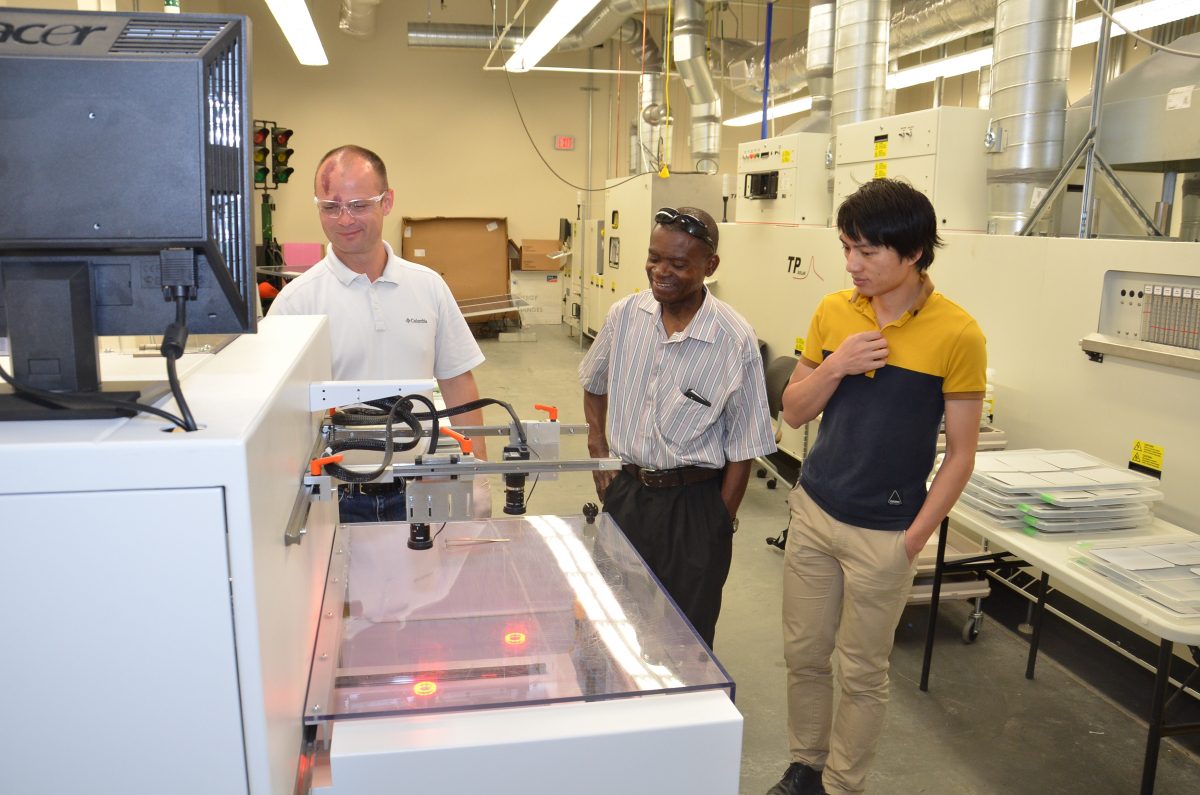Photovoltaic Technology Research Laboratory

Vision
The Photovoltaic Research Laboratory (PVRL) desires to establish a world class research and education program at UNC Charlotte to attract young and talented minds in Science and Engineering to give USA a competitive advantage in the field of Photovoltaic Science, Engineering and Technology.
Areas of Expertise
ilicon solar cell – Degisn, modeling, analysis, fabrication and characterization.
III-V Light Emitting Diodes – Degisn, modeling, analysis, fabrication and characterization.
Research Highlights
Cost effective, high efficiency solar cells Improved understanding of solar cell layers Development of new, low-cost dielectrics for effective passivation of solar cells. Development of novel contacting schemes Optimization of inline process for <50 µm thick silicon application Investigation of the microstructures of Ag and Al metal pastes New module concepts and materials Systems integration and connectors.